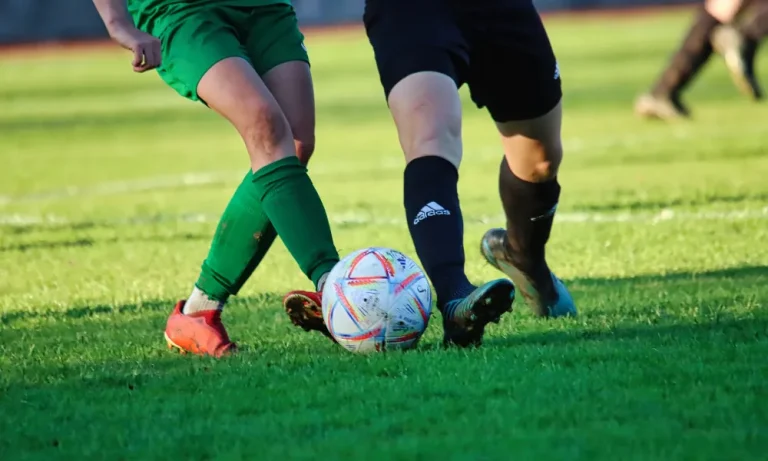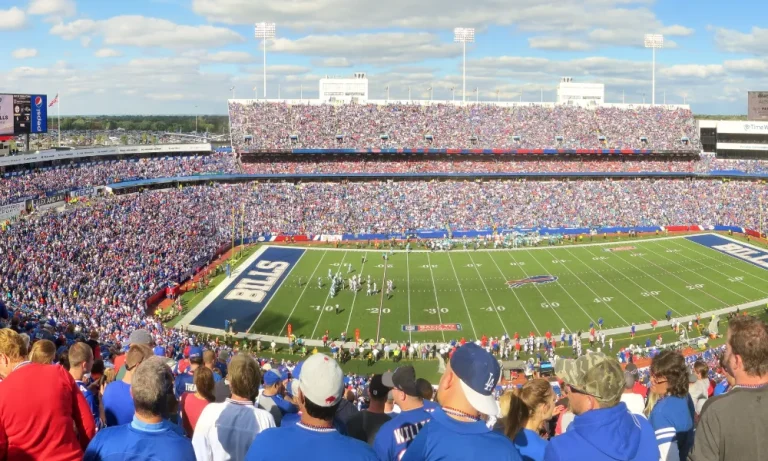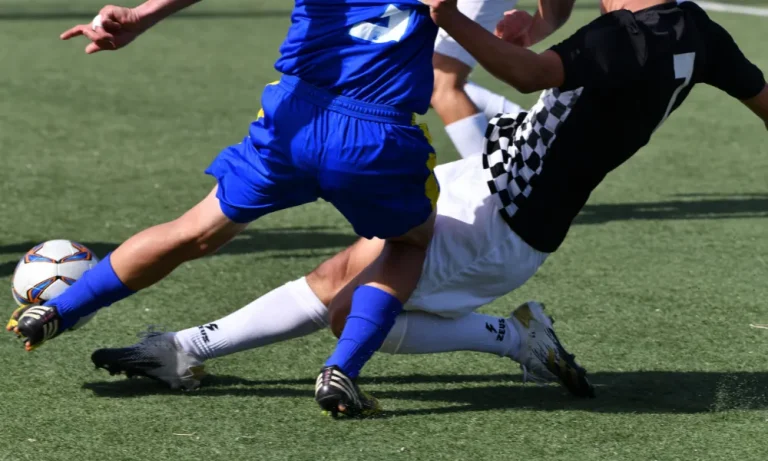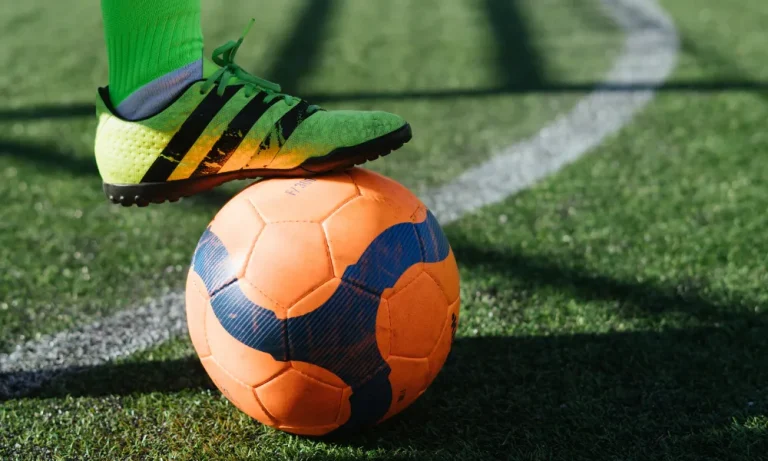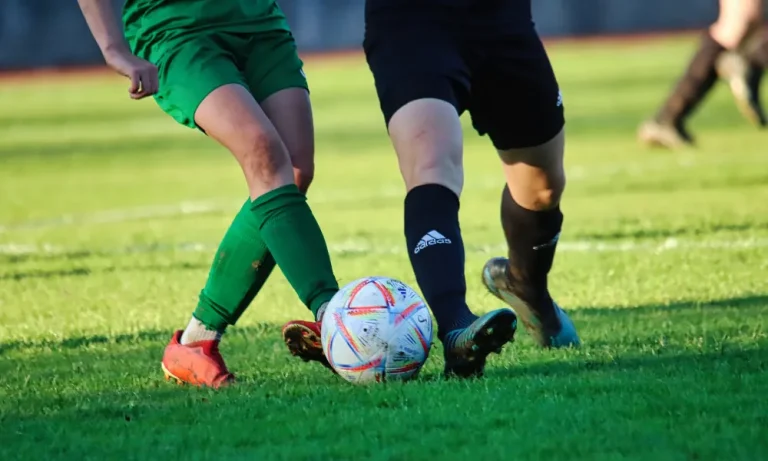How Do I Take a Hit in Football (The Right Way)
Are you passionate about football? As you step onto the field, you’re greeted with the exhilaration of the game, the anticipation of plays, and the possibility of taking hits. But have you ever wondered how to take a hit in football effectively? In this article, we will explore the importance of learning proper techniques for taking hits and how mastering this art can not only enhance your performance but also reduce the risk of injuries. So, whether you’re a beginner or a seasoned player, let’s dive in and discover the secrets to confidently taking hits in football.
Understanding the Fundamentals
As a football player, understanding the fundamentals of taking a hit is crucial for your success on the field. So, what does it mean to take a hit in football? Simply put, it refers to the act of absorbing physical impact from an opponent during gameplay. It’s an integral part of the game, where physicality plays a significant role.
Football is a contact sport, and learning how to absorb hits effectively is essential for several reasons. First and foremost, it allows you to maintain possession of the ball and continue advancing towards your goal. By mastering the art of taking hits, you can stay on your feet, retain control, and keep the play alive.
Moreover, the ability to absorb hits is directly linked to player safety. When you know how to properly brace for impact and position your body, you significantly reduce the risk of injuries. By understanding the fundamentals, you can minimize the impact’s force, distribute it throughout your body, and protect yourself from potential harm.
To overcome the fear of taking hits, it’s crucial to develop the right mindset. Embrace the physicality of the game, trust in your abilities, and focus on the task at hand. By mentally preparing yourself and building confidence, you can face the challenges head-on and improve your overall performance on the field. Remember, football is a game of strategy, skill, and resilience, and understanding the fundamentals of taking hits is a key component of success.
Essential Techniques for Taking Hits
A. Body Positioning
Maintaining a strong and balanced stance is vital when it comes to taking hits in football. By doing so, you can absorb impact efficiently and minimize the risk of injury. To achieve this, focus on positioning your body correctly. Keep your feet shoulder-width apart, knees slightly bent, and weight evenly distributed. This stance provides a solid foundation and allows you to absorb hits without losing your balance.
When it comes to body positioning, it’s important to adjust accordingly based on the type of hit you anticipate. For frontal hits, position your body square to the opponent, with your shoulders and hips aligned. This alignment helps you absorb impact evenly across your entire body. On the other hand, for lateral hits, angle your body slightly to the side, with your leading shoulder facing the opponent. This positioning helps you redirect the force of the hit and maintain your stability.
Bracing for Impact
When it comes to taking hits in football, bracing your body is a crucial technique to distribute force and minimize the risk of injury. To do this effectively, focus on engaging your core muscles. By tightening your abdominal muscles, you create a stable and strong center that can absorb and dissipate impact. This not only helps protect your vital organs but also reduces the chances of getting knocked off balance.
In addition to engaging your core, proper positioning of your arms and legs plays a significant role in bracing for impact. Keep your arms bent and close to your body, with your elbows tucked in. This positioning helps to protect your ribs and prevents unnecessary strain on your shoulders. Similarly, position your legs shoulder-width apart and slightly flexed at the knees. This stance maximizes stability and minimizes vulnerability to impact.
By bracing your body, engaging your core, and positioning your arms and legs correctly, you can effectively absorb hits in football. This technique allows you to distribute the force of impact throughout your body, reducing the risk of injury and maintaining your stability on the field.
Mental Preparation
Mental preparation is just as important as physical techniques when it comes to taking hits in football. To mentally prepare, I utilize various strategies that help me stay focused and confident on the field. One effective strategy is visualization exercises.
By vividly imagining myself successfully taking hits and performing well, I build confidence and reduce anxiety. This mental rehearsal allows me to feel prepared and ready to face any challenge that comes my way.
Another crucial aspect of mental preparation is developing mental toughness. Football is a physically demanding sport, and mental resilience is key to withstanding the physical challenges. I train my mind to stay focused, determined, and resilient, even when facing intense hits.
By embracing the mindset that I am strong and capable, I can tackle any challenge head-on and push through any discomfort that may arise.
Strengthening the Body for Impact
To withstand hits in football, it is crucial to prioritize physical conditioning and strengthen my body. Physical conditioning plays a significant role in preparing my muscles and joints for impact. By engaging in regular strength training exercises, I build a solid foundation that helps me absorb hits more effectively and reduces the risk of injury. It is important to focus on exercises that target the major muscle groups involved in impact absorption, such as the core, legs, and upper body.
For building a solid foundation, exercises like squats, lunges, and deadlifts are beneficial. These exercises target the lower body muscles, including the quadriceps, hamstrings, and glutes, which are essential for stability and power generation.
Additionally, exercises like planks and Russian twists help strengthen the core muscles, providing stability and improving overall body control.
To further enhance impact absorption, it is essential to focus on specific muscle groups. Strengthening the muscles in the upper body, such as the chest, shoulders, and back, can help improve the ability to brace for impact and protect vital areas.
Incorporating exercises like push-ups, bench presses, and rows can help develop strength in these areas.
Safety Measures and Injury Prevention
When it comes to playing football, ensuring safety is of utmost importance. One crucial aspect of safety measures is the use of protective gear. Essential protective equipment in football includes helmets, shoulder pads, mouthguards, and pads for the hips, knees, and elbows.
This gear is designed to minimize the risk of injuries during hits by providing a layer of protection for vulnerable areas.
The equipment plays a vital role in reducing the impact force and protecting the head, shoulders, and other key areas from direct hits. The helmet, in particular, is crucial for safeguarding the head and preventing head injuries.
Shoulder pads help absorb impact and protect the shoulders from collisions. Mouthguards protect the teeth and jaw, while pads for the hips, knees, and elbows cushion these areas from potential impact.
To ensure optimal safety, it is essential to ensure the proper fit and maintenance of the gear. Equipment should be properly fitted to the individual’s body to ensure maximum protection and freedom of movement.
Regular inspection and maintenance of the gear, including checking for any damages or wear and tear, is necessary to ensure its effectiveness.
Proper Tackling Techniques
Understanding the correct tackling techniques is essential for both protecting myself and ensuring the safety of others while playing football. By following these techniques, I can minimize the risk of injuries and execute tackles effectively.
To start, it is crucial to grasp the fundamental principles of safe tackling. This includes keeping my head up, maintaining proper body position, and aiming for the opponent’s midsection. By keeping my head up, I reduce the risk of head and neck injuries.
Maintaining proper body position involves bending my knees, lowering my center of gravity, and keeping my feet shoulder-width apart for stability. Targeting the opponent’s midsection helps ensure a controlled and effective tackle.
Additionally, maintaining proper body position throughout the tackle is vital. I should focus on maintaining a strong and stable base, keeping my body square to the opponent, and wrapping them up securely. By doing so, I can absorb the impact and reduce the risk of injury to myself and the opponent.
Executing tackles efficiently requires practicing proper technique and developing good timing. It is important to anticipate the opponent’s movements, react quickly, and maintain a strong grip while bringing them down. Regular practice and repetition help me refine my tackling skills and build muscle memory.
Overcoming Fear and Building Confidence
Addressing the fear of getting hit is crucial for my overall performance and safety in football. By implementing specific techniques, I can overcome this fear and build the confidence needed to excel on the field.
To begin, it is essential to acknowledge and understand the fear of getting hit. By identifying the specific concerns or anxieties associated with it, I can address them directly. This can involve talking to teammates, coaches, or even seeking guidance from sports psychologists who can provide strategies for managing fear and anxiety.
Gradual exposure and incremental challenges play a significant role in building confidence. By gradually exposing myself to controlled situations where I face physical contact, I can acclimatize to the intensity and build confidence over time. This can be achieved through structured drills, scrimmages, and practice games that gradually increase in intensity.
The importance of trust in teammates and coaches cannot be overstated. Knowing that my teammates and coaches have my back and are there to support and protect me can alleviate anxiety. Building strong relationships and open communication channels within the team fosters a sense of trust and creates a supportive environment where fear can be overcome.
FAQs – How do I take a hit in football?
What is the proper body position when taking a hit in football?
Maintain a low center of gravity, bend your knees, and brace for impact with your core engaged to absorb the hit effectively.
How do I protect myself from injuries when getting hit in football?
Focus on keeping your head up, using proper tackling techniques, and wearing appropriate protective gear like helmets and pads.
How can I minimize the impact of a hit in football?
Strengthen your muscles through conditioning exercises, improve your agility to evade direct hits, and practice falling and rolling techniques to disperse impact.
What should I do after taking a hard hit in football?
Take a moment to assess your body, communicate any discomfort to your coach or trainer, and follow proper concussion protocols if needed.
How can I mentally prepare myself for taking hits in football?
Build confidence through practice and gradually exposing yourself to physical contact, trust your teammates and coaches, and focus on maintaining a positive mindset during the game.
Conclusion
To wrap up, we’ve covered the essential techniques and safety tips for taking hits in football. Remember, practice makes perfect. By refining your hit-taking skills, you can enhance your performance while ensuring your safety on the field. So, don’t hesitate to apply the techniques and knowledge gained from this article.
Embrace the physicality of the game, trust in your preparation, and have confidence in your ability to absorb hits effectively. With time and practice, you’ll become a resilient player who can tackle any challenge that comes your way. So go out there, give it your all, and enjoy the game of football to the fullest!

